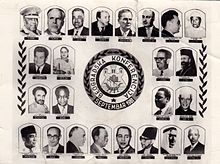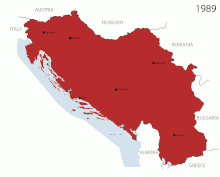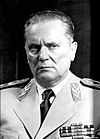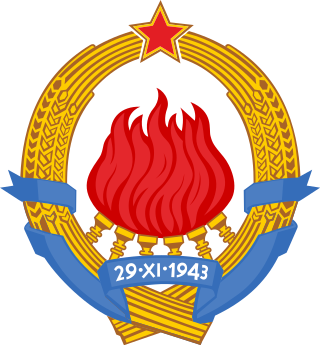
Democratic Federal Yugoslavia was a charter member of the United Nations from its establishment in 1945 as the Socialist Federal Republic of Yugoslavia until 1992 during the Yugoslav Wars. During its existence the country played a prominent role in the promotion of multilateralism and narrowing of the Cold War divisions in which various UN bodies were perceived as important vehicles. Yugoslavia was elected a non-permanent member of the United Nations Security Council on multiple occasions in periods between 1950 and 1951, 1956, 1972–1973, and 1988–1989, which was in total 7 years of Yugoslav membership in the organization. The country was also one of 17 original members of the Special Committee on Decolonization.

Finland–Yugoslavia relations were historical foreign relations between Finland and now split-up Kingdom of Yugoslavia or Socialist Federal Republic of Yugoslavia. Both countries gained their independence during or in the immediate aftermath of the World War I and the collapse of Austria-Hungary (Yugoslavia) or Russian Empire (Finland). Two parties established formal bilateral relations in 1928. Two countries developed their relations after the end of the World War II and 1948 Tito–Stalin split. At the time neither one of them was a part of either Eastern or Western Bloc in the Cold War divided Europe. Both countries perceived development of relations among non-bloc neutral European states as a way to avoid isolation and preserve certain level of independence without alienating major powers. Belgrade however perceived that in deeply divided Europe there was shrinking maneuvering space for neutral countries and followed the development of what will be called process of Finlandization with great concern. It therefore turned its focus on new allies among former colonies and mandate territories outside of Europe where it developed its policy of equidistant active neutrality via its activities in the newly founded Non-Aligned Movement.

Indonesia–Yugoslavia relations were historical foreign relations between now split-up Socialist Federal Republic of Yugoslavia and Indonesia. Both countries were founding member states of the Non-Aligned Movement. Two countries established formal diplomatic relations in 1954. First diplomatic documents were exchanged as early as 1947. Breakup of Yugoslavia, one of the founding and core members of the Non-Aligned Movement, brought into question the very existence of the Movement which was preserved only by politically pragmatic chairmanship of Indonesia.

India–Yugoslavia relations were historical foreign relations between India and now split-up Socialist Federal Republic of Yugoslavia. Yugoslavia established full diplomatic relations with India on 5 December 1948 following the 1948 Tito–Stalin split. Initially two countries developed their relations at the UN Security Council in 1949 during their shared membership. In the period of the Cold War both countries were the founders and among core members of the Non-Aligned Movement.

Morocco–Yugoslavia relations were historical foreign relations between Morocco and now split-up Socialist Federal Republic of Yugoslavia. Two countries established formal bilateral relations on 2 March 1957. Both countries were founding members of the Non-Aligned Movement. Moroccan king Hassan II supported Yugoslav bid to host the first conference of the movement in 1961 even over the candidacy of Cairo. The belief was that Yugoslav bid will “increase the possibility of wider Arab participation” irrespective of some internal divisions. Yugoslav diplomacy on its part gave high priority to country's relations with non-bloc Mediterranean countries.

Vietnam–Yugoslavia relations were historical foreign relations between Vietnam and now split-up Socialist Federal Republic of Yugoslavia. Two countries established formal bilateral relations in 1957. Relations were predominantly positive due to positive public image of Vietnam in Yugoslavia which was result of Vietnamese resistance to foreign domination and shared membership in the Non-Aligned Movement.
During the Cold War period former Southeast European country of the Socialist Federal Republic of Yugoslavia established and maintained significant political, cultural and economic exchanges and relations with newly independent African states. While majority of multilateral exchanges were organized via Non-Aligned Movement and the United Nations, significant cooperation developed with the Organisation of African Unity as well, predecessor to contemporary African Union. Yugoslavia was the only non-African country which participated in funding of the Liberation Committee of the Organisation of African Unity. While being a uniquely involved in the workings of the body the country nevertheless preferred bilateral relations with individual liberation movements. The Organisation of African Unity included the Non-Alignment principle in its charter while Yugoslavia consider the organisation to be the only legitimate representative for the entire African continent throughout the Cold War era. Yugoslavia therefore followed common OAU line in its own policies towards issues in Africa.

China–Yugoslavia relations were historical foreign relations between China and now split-up Socialist Federal Republic of Yugoslavia. For a long period during the Cold War China was critical towards perceived excessive liberalism, too close cooperation with Western Bloc or market socialism of Yugoslavia, therefore the Chinese communists accused the Yugoslav communists of being revisionists, while the Yugoslav communists accused the Chinese communists of being dogmatics. But, the good relations between both socialist states were restored at the end of the 1960s, and improved even more since the Sino-Albanian rupture occurred, with the trend of improved relations continuing in relations with successor states, particularly Serbia. In the 1980s Deng Xiaoping's foreign policy resembled Yugoslavia's stance of being non-aligned and non-confrontational and with Hu Yaobang’s 1983 appraisal of ‘Josip Tito's principles of independence and equality among all communist parties, and of opposing imperialism, colonialism, and hegemonism’. All six former Yugoslav republics have memoranda of understanding with China on Belt and Road Initiative.

Summit Conference of Heads of State or Government of the Non-Aligned Movement on 1–6 September 1961 in Belgrade, Yugoslavia was the first conference of the Non-Aligned Movement. A major contributing factor to the organization of the conference was the process of decolonization of a number of African countries in the 1960s. Some therefore called it the ″Third World's Yalta″ in reference to 1945 Yalta Conference.

Third Conference of the Non-Aligned Movement on 8–10 September 1970 in Lusaka, Zambia was the third conference of the Non-Aligned Movement. A preparatory meeting of Foreign Ministers drafted a number of resolutions which were considered by the Summit Conference. President of Zambia Kenneth Kaunda opened the conference by underlining non-alignment as "the natural choice at the time of increased hostility created by ideological conflicts in the bipolar world"

The Non-Aligned Movement (NAM) is a forum of 120 countries that are not formally aligned with or against any major power bloc. It was founded with the view to advancing interests of developing countries in the context of Cold War confrontation. After the United Nations, it is the largest grouping of states worldwide.
50th Anniversary Additional Commemorative Non-Aligned Meeting was the 5–6 September 2011 Non-Aligned Movement foreign ministers commemorative meeting which took place in Belgrade, Serbia. The meeting took place in the House of the National Assembly of the Republic of Serbia, building which hosted the 1st Summit of the Non-Aligned Movement on 5–12 June 1961 during the existence of the Socialist Federal Republic of Yugoslavia. The idea for meeting was proposed by the President of Serbia Boris Tadić during his participation at 15th Summit of the Non-Aligned Movement in Sharm el-Sheikh in Egypt. Some 600 delegates, representing over 100 national delegations, attended the meeting.

The 9th Summit of the Non-Aligned Movement on 4–7 September 1989 in Belgrade, SR Serbia, SFR Yugoslavia was the conference of Heads of State or Government of the Non-Aligned Movement. Belgrade was the first city to host the Summit for the second time after it hosted the 1st Summit of the Non-Aligned Movement in 1961. Yugoslavia was unanimously selected as the host of the Summit at the 1988 Non-Aligned Foreign Ministers Conference in Nicosia, Cyprus. While the Federal Secretary of Foreign Affairs of Yugoslavia led by Budimir Lončar was excited, the Presidency of Yugoslavia, Yugoslav collective head of state, was skeptical about the prospects of hosting the event but ultimately supported it by Josip Vrhovec in fear that rejection may show the level of the crisis in the country. The comparatively weak federal government organizers of the event ultimately hoped that the conference may convince leaders of the strong Yugoslav federal republics to resolve the early Yugoslav crisis in a constructive and peaceful way, yet it nevertheless escalated in 1991 Yugoslav Wars. The event is therefore sometimes described as the swan song of the prominent Yugoslav Cold War diplomacy. Summit took place at the Sava Centar in New Belgrade. Janez Drnovšek held the opening remarks in Slovenian language.
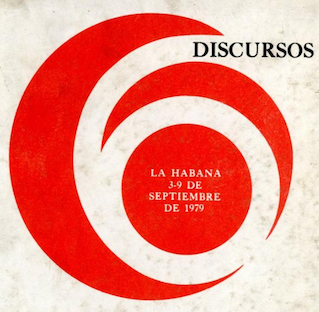
6th Summit of the Non-Aligned Movement took place on 3–9 September 1979 in Havana, the capital city of Cuba. 93 countries took part in the summit. It was the first NAM summit which took place in one Iberoamerican country. The event was marked by political and ideological divisions among the non-aligned countries. The organizer wanted to use the event to propose "a natural alliance" between the movement and the Eastern Bloc causing strong resistance from some members, particularly SFR Yugoslavia. While both Cuba and Yugoslavia were at the time nominally socialist states, they took substantially different position in world politics with Cuba perceiving United States and Yugoslavia perceiving Soviet Union as the main threat to its independence.
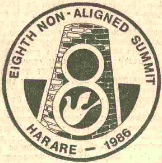
8th Summit of the Non-Aligned Movement on 1–6 September 1986 in Harare, Zimbabwe was the conference of heads of state or government of the Non-Aligned Movement. 101 countries took part in the summit, 51 of which were African countries. Explicitly expressed South–South cooperation call appeared for the first time in the 1986 NAM final declaration.
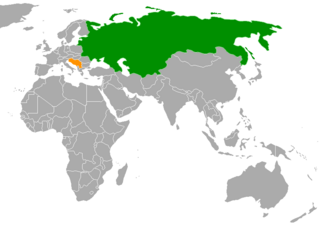
Soviet Union–Yugoslavia relations were historical foreign relations between Soviet Union and Yugoslavia. Both states are now-defunct states with dissolution of the Soviet Union from 1988 through 1991 and breakup of Yugoslavia from 1991 through 1992. Relations between the two countries developed very ambiguously. Until 1940 they were openly hostile, in 1948 they deteriorated again and in 1949 were completely broken. In 1953–1955 period, bilateral relations were restored with the signing of Belgrade declaration, but until the collapse of Yugoslavia they remained very restrained. Relations with Soviet Union were of high priority for Belgrade as those relations or their absence helped the country to develop the principle of Cold War equal-distance on which the Yugoslav non-alignment policy was based.

10th Summit of the Non-Aligned Movement on 1–6 September 1992 in Jakarta, Indonesia was the conference of Heads of State or Government of the Non-Aligned Movement. Around 100 delegations, including some 60 heads of State or government, participated in the Summit in Jakarta.

1978 Non-Aligned Foreign Ministers Conference was held in Belgrade, SR Serbia, SFR Yugoslavia, between 25 and 30 July 1978. The conference was organized as a preparatory event ahead of the divisive 6th Summit of the Non-Aligned Movement which took place in Havana next year. The NAM member states were deeply divided over Cuban military actions in Africa and country's pro-Soviet politics with some of them threatened to boycott the Summit in Havana. The host country of Yugoslavia was recognized as the leader of the middle ground delegations which wanted to overcome divisions and radicalism and was in this effort supported primarily by India, Sri Lanka and Indonesia.
1969 Non-Aligned Movement Consultative Meeting took place in Belgrade, SR Serbia, SFR Yugoslavia on 8–12 July following the Warsaw Pact invasion of Czechoslovakia in August 1968. Non-interventionism was put on the top of the agenda by the host nation while the discussion over the national liberation caused some divisions with Algeria requesting their full participation but only Palestine Liberation Organization being granted the right to participate on equal footing. Algeria in turn blocked Yugoslav proposal to admit countries formally aligned in military pacts but pursuing policy close to non-alignment such as the Socialist Republic of Romania and Czechoslovak Socialist Republic which tried to distance themselves from Soviet led Warsaw Pact and Malaysia, Singapore, Tunisia and Pakistan most of which were part of Western led Baghdad Pact or Southeast Asia Treaty Organization.

The "Josip Broz Tito" Art Gallery of the Nonaligned Countries was an art gallery in Titograd in the Socialist Republic of Montenegro, one of the federal subjects of the Socialist Federal Republic Yugoslavia. It was the only art institution established directly by the Non-Aligned Movement's decision.




